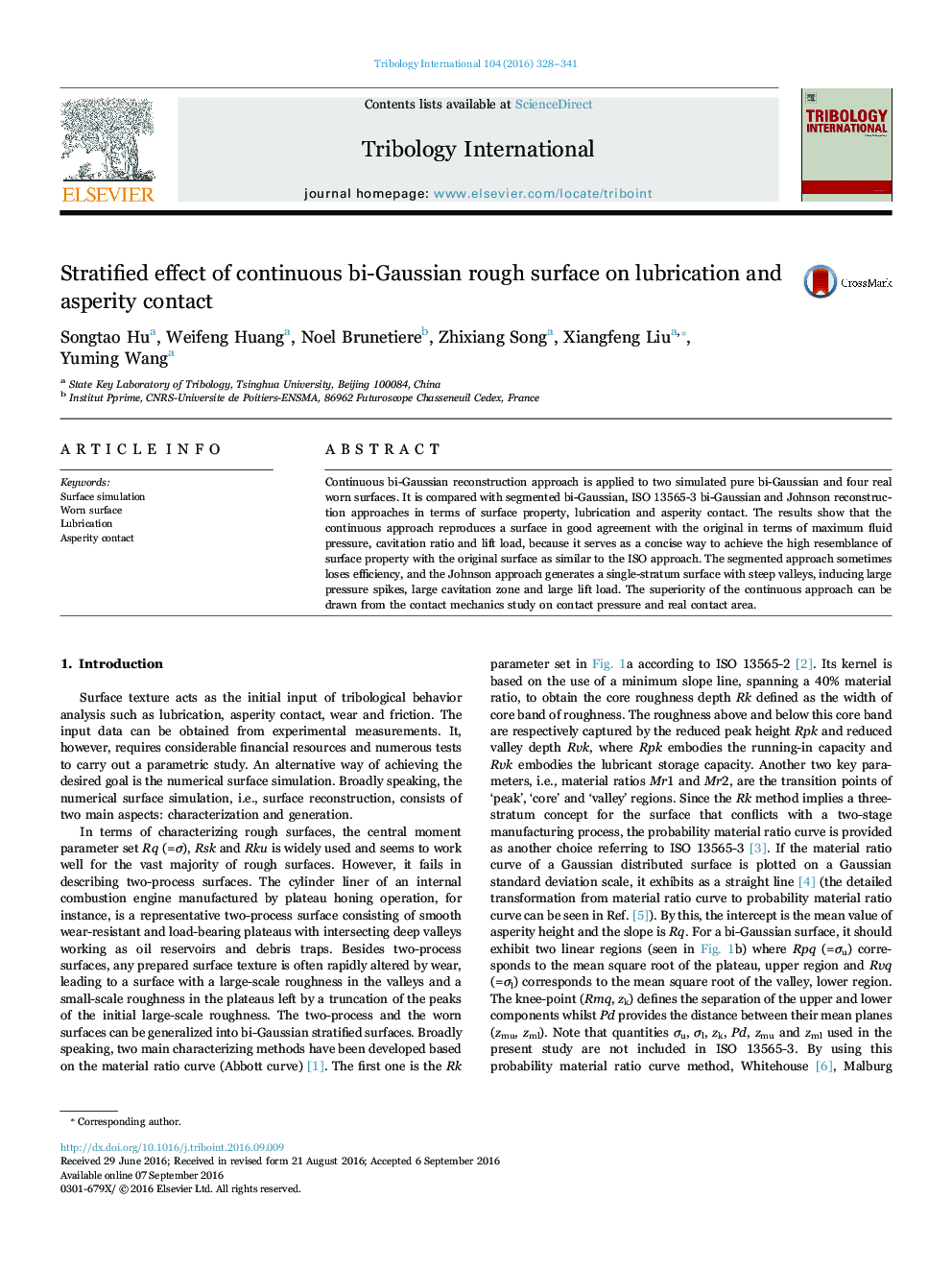| Article ID | Journal | Published Year | Pages | File Type |
|---|---|---|---|---|
| 4986329 | Tribology International | 2016 | 14 Pages |
Abstract
Continuous bi-Gaussian reconstruction approach is applied to two simulated pure bi-Gaussian and four real worn surfaces. It is compared with segmented bi-Gaussian, ISO 13565-3 bi-Gaussian and Johnson reconstruction approaches in terms of surface property, lubrication and asperity contact. The results show that the continuous approach reproduces a surface in good agreement with the original in terms of maximum fluid pressure, cavitation ratio and lift load, because it serves as a concise way to achieve the high resemblance of surface property with the original surface as similar to the ISO approach. The segmented approach sometimes loses efficiency, and the Johnson approach generates a single-stratum surface with steep valleys, inducing large pressure spikes, large cavitation zone and large lift load. The superiority of the continuous approach can be drawn from the contact mechanics study on contact pressure and real contact area.
Related Topics
Physical Sciences and Engineering
Chemical Engineering
Colloid and Surface Chemistry
Authors
Songtao Hu, Weifeng Huang, Noel Brunetiere, Zhixiang Song, Xiangfeng Liu, Yuming Wang,
